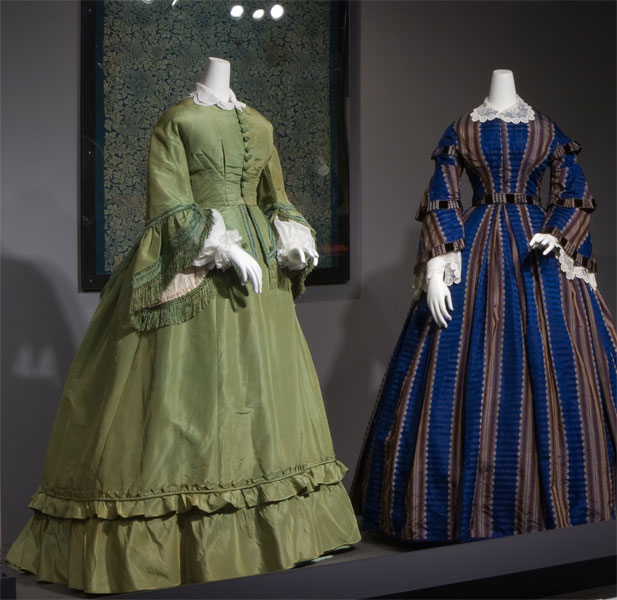

![]()
Two-piece day dress - Green silk faille, chenille - Circa 1865, USA - Museum purchase, P88.43.1
Many green dyes of the mid-nineteenth century contained the poison arsenic, including those widely used in the production of fabrics and clothing. Although green was the most notorious, many other aniline dyes also contained arsenic. Health risks to the textile worker as well as the wearer ranged from skin irritation to poisoning from inhalation of dust or fumes.

![]()
Dress - Silk taffeta, velvet - 1860, USA - Museum purchase, P85.12.2
Mauveine was the first commercially successful aniline dye. Chemically derived from coal tar by William Henry Perkin, its 1856 discovery paved the way for an influx of synthetic dyes that produced bold, vivid colors like those on this brocaded silk. Chemical colors dominated fashion for much of the late nineteenth century, displacing many traditional plant or insect dyes.


![]()
Morris & Co. - (William Morris) - Bird and Anemone - Furnishing fabric - Indigo-discharged and block-printed cotton - Late 19th century, England - Museum purchase, P86.69.7
Cotton submerged in an indigo dye vat acquired a dark green color that would oxidize to become the characteristic blue seen here. Morris believed that "anyone wanting to produce dyed textiles with any artistic quality in them must entirely forego the modern and commercial methods." However, certain traditional processes—such as indigo dyeing—have since been found to adversely affect ecosystems.